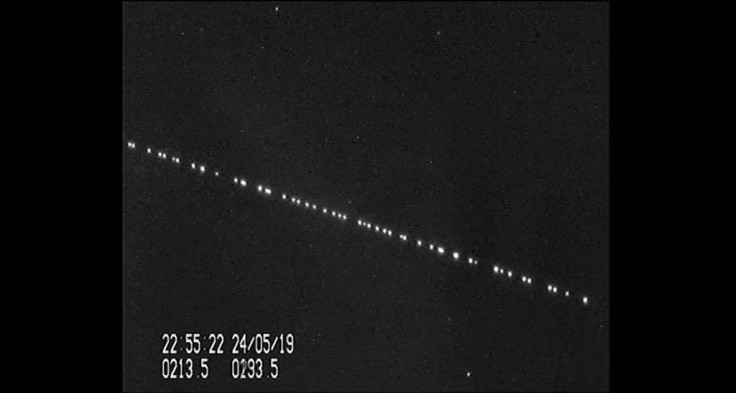SpaceX Starlink Satellites Cause Light Flashing In Montana Sky

KEY POINTS
- Starlink satellites ruined a meteor shower
- Satellites caused strange lights to flash in Montana sky
- People shared photos of rows of lights in the sky
The SpaceX Starlink satellite constellation is the largest tranche of such satellites that have been launched together to date. On Christmas day 2019, when the first tranche of satellites was launched, they caused a flutter.
The 60 satellites disrupted a meteor shower gazing session and lit up the sky in Northern Montana. They caused rows of strange lights, which were seen in the night sky.
Local channel Scripps station KRTV from Great Falls, Montana, received several photos and reports from people of a row of bright lights flashing in the sky. Many people thought that it was a UFO sighting. But, it was a string of satellites launched to develop a low-latency, broadband internet system to meet consumer needs globally. The satellites have been launched to provide internet to areas with little or no connectivity.
Computer scientist and University of Maryland professor, Dr. Jen Golbeck posted on Twitter Thursday, “If you saw a row of UFO-like lights in the sky in IL, IA, MI (like this but spaced out), that was SpaceX Starlink Satellites! You'll be able to see them in the next few days, too!”
If you saw a row of UFO like lights in the sky in IL, IA, MI (like this but spaced out), that was SpaceX Starlink Satellites! You'll be able to see them in the next few days, too!
— Dr. Jen Golbeck 🇺🇦💉💉💉 (@jengolbeck) December 23, 2019
Check here for a map (and set the time back to see their track today) https://t.co/wtkU9xSFY9 pic.twitter.com/cZ4UUvj5Zc
You can actually track the movement of these satellites using a satellite tracker on the heavens-above website’s ‘Starlink 2’ section.
The SpaceX satellite launch is expected to disrupt not just existing systems of internet-beaming, it is also expected to disrupt space gazing. The company plans to launch 42,000 satellites in total. Just the launch of these many satellites may actually block the view of many stargazers till 2024.
Once the satellite constellation is launched, it can block the view of high-end telescopes such as the Large Synoptic Survey Telescope, which is being built on the Cerro Pachon ridge in Chile and is expected to map the entire sky in just three nights and detect a hundred thousand supernova remnants.
© Copyright IBTimes 2024. All rights reserved.





















